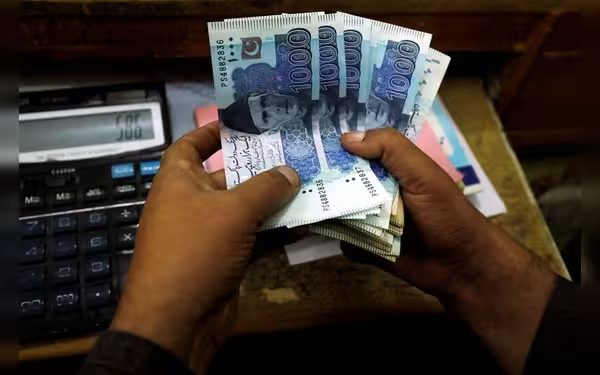Saturday, November 16, 2024 07:30 PM
Rupee Declines as Dollar Supply Dwindles
- Rupee loses Rs0.12 against US dollar.
- Exporters reduce dollar sales amid market changes.
- Currency fluctuations impact inflation and consumer prices.
 Image Credits: tribune.com.pk
Image Credits: tribune.com.pkThe Pakistani rupee declines by Rs0.12 against the US dollar due to reduced dollar supply from exporters, raising inflation concerns.
The Pakistani rupee has experienced a slight decline, losing Rs0.12 against the US dollar, and settling at Rs277.64 in the inter-bank market on Monday. This depreciation of the currency appears to be linked to a slowdown in the supply of US dollars, which has raised concerns among market participants.
In recent days, there has been a noticeable shift in the behavior of exporters. Reports indicate that they have reduced their sales of US dollars, particularly on future counters. This change comes after a significant drop in the premium on one-month and two-month forward contracts. As a result, the supply of the greenback in the market has thinned out, leading to the rupee's decline.
The dynamics of currency exchange can often be complex, influenced by various factors including market sentiment, economic indicators, and geopolitical events. In this case, the reluctance of exporters to sell dollars may be a strategic move, as they anticipate better rates in the future. This cautious approach can create a ripple effect, impacting the overall currency market.
For many, the fluctuation of the rupee against the dollar is more than just numbers; it affects daily life, from the cost of imported goods to the prices of local products. As the rupee weakens, consumers may face higher prices, which can lead to inflationary pressures. Therefore, it is crucial for stakeholders, including policymakers and businesses, to monitor these trends closely.
The recent dip in the rupee's value highlights the delicate balance of currency supply and demand. As exporters adjust their strategies, the market will continue to react, and it remains to be seen how this will affect the broader economy. Understanding these fluctuations is essential for anyone looking to navigate the financial landscape in Pakistan.













